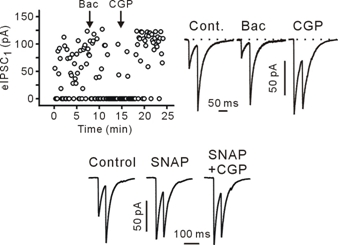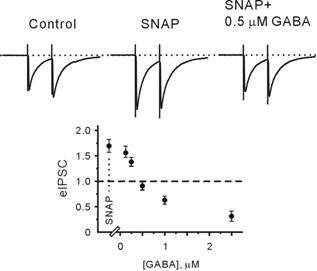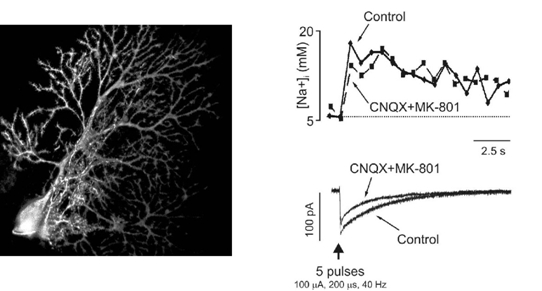The main directions are:
1. quantitative synaptic transmission and its developmental regulation,
2. tonic presynaptic modulations of synaptic transmission,
3. local extracellular neurotransmitter concentrations and their regulation,
4. glia-neuron interactions.

Dr. Sergei Kirischuk
To adress this questions I mainly use electrophysiological, but also micro- fluorimetric, immunohistochemical and molecular methods.
Quantitative synaptic transmission and its developmental regulation
Using the binomial model of synaptic transmission one can compare different synapses or the same projections during development. The model assumes that the mean postsynaptic response is a product of the quantal size (q), i.e. postsynaptic response elicited by release of one vesicle, number of available vesicles (the readily releasable pool, RRP) and the probability of release (p). Using a relatively simple stimulation protocol one can obtain all parameters.

Tonic presynaptic modulations of synaptic transmission

In the postnatal neocortex application of CGP55285, a GABAB receptor antagonist, strongly potentiate GABAergic IPSCs showing that GABAB receptors are partially activated under control conditions. Blockade of GABA transporter-2/3 with SNAP-5114 strongly reduced this tonic inhibition. Thus, GABA transporter releases GABA and GABA tonically activates GABAB receptors.
Local extracellular neurotransmitter concentrations and their regulation
If 1) presynaptic receptors are tonically activated and 2) one can vary ambient concentration of neurotransmitter in the extracellular space, then by applying exogenous neurotransmitter one can estimate its endogenous concentration.

This image shows a staining of astrocytes in the neocortical brain slices with a Na+-sensitive indicator (SBFI). Because SBFI is a ratiometric probe, it is possible to perform quantitative measurements of intracellular sodium concentrations.
Neuron-glia interactions

Three-dimensional reconstruction of cerebellar Purkinje neuron and Bergmann glial cell (left). Short electrical stimulation of parallel fibers elicited sodium increase (right top) and an inward current in Bergmann glial cell (right bottom). Both responses were not blocked by antagonists of ionotropic (AMPA and NMDA) receptors. Thus, in addition to glutamate receptors, glial glutamate transporters can mediate a cross-talk between neurons and glia.